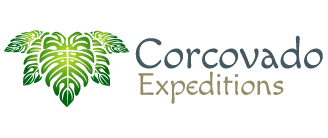Sierpe – Terraba Mangrove forest Information
Coordinates: 08°52’N 083°36’W Elevation: 0 m Area: 30,654 ha
Sierpe Térraba mangroves Location:
The Sierpe Terraba mangroves are located in the province of Puntarenas, Osa Peninsula, Costa Rica, approximately 30 km from Palmar Norte.
Sierpe Terraba mangroves Criteria:
This reserve is an important habitat of many species of birds, fish, mammals and reptiles.The mangroves play an important direct and indirect role in maintaining the fish stock. Some species depend on these sites for their life cycle or for an important part of this cycle (reproduction, growth or feeding).
Wetland Types:
The area includes the estuary of the Rivers Térraba and Sierpe, and adjacent lagoons (Laguna Sierpe, Laguna Porvenir), periodically inundated mangrove and “yolillo” palm Raphia taedigera swamp forest, sandy beaches and cliffs.
Sierpe Terraba mangroves Biological/Ecological notes:
The flora in the reserve is formed by hydrophytes whose growth cycle is in harmony with the aquatic environment. There are three types of vegetation (mangrove, palustrine and herbaceous) in Térraba-Sierpe. Sea life includes fish, mollusks, oysters and other shellfish. More than 55 species of fish use this wetland, and there are at least 10 commercially exploited species of shellfish. Resident and migratory bird species visit the area. Bird species include Herons, Egrets, Cotingas, , and Pandion haliaetus; mammals include Agouti paca and Lutra annectens; and reptiles Caiman crocodilus, Crocodylus acutus and Tree Boas.
Sierpe Terraba mangroves Hydrological/Physical notes:
The Térraba-Sierpe wetland is characterized by a woodland ecosystem with periodically flooded swamps and mangrove forest, at the mouths of the Térraba and Sierpe Rivers. The Río Grande de Térraba is the main source of freshwater into the estuarine system. It drains a basin of approximately 5,000 square kilometers. Its main tributary is the Rio General along with its tributaries. The Sierpe River forms the border of the mangrove woodland. It has tributary rivers and streams. The mangrove vegetation plays a basic role in erosion protection (both from run-off and wind erosion) and in maintaining water quality (retaining toxic contaminants, transferring nutrients and regulating sedimentation). Rainwater and run-off are stored in the wetland.
Térraba-Sierpe and its area of influence are geologically formed by materials from the Cretaceous, Tertiary and Quaternary periods. The materials are of volcanic, erosive or alluvial origin. The majority of the soils in the site have a high water content, variable salt quantities and low levels of oxygen. These soils are semi fluid, poorly consolidated, grey or black in color reflecting high sulphate content. The alluvial soils, with good to poor drainage, derive from sediments and volcanic ash. The site is periodically flooded by tides, transferring fine mud’s rich in organic material. The average total tidal fluctuation is about 2 meters. The climate is very hot and humid, and precipitation is abundant from May to November. The average annual rainfall is 3,638 mm.
Sierpe Terraba mangroves Human Uses:
Térraba-Sierpe was nationally designated as a Forest Reserve in 1977. The site is entirely state-owned and managed by the Ministry for the Environment and Energy. The surrounding land is private property (banana plantations, rice growing and cattle grazing). Within the site, mangrove products are extracted by an organized group and individual families, e.g. for fuel (wood) and for tanins (bark). However, the main income comes from harvesting of the “piangua” clam Anadara tuberculosa and crabs, and traditional fishing. “Pianguas” have been harvested by the “Térraba” Indians for at least 1,200 years, who also used the Rhizophora harrisonnii mangrove bark for tanning.
Very few persons live within the limits of the site, most of them inhabit the surrounding areas. There is a project to develop aquaculture and tourism is in its very early stages. The wetland is used by tour operators as a tourist attraction, to promote the beautiful landscape, fauna and flora. A study is being carried out on tourist capacity in order to regulate tourism. The Mangrove Environmental Education Program was established in 1989. There is a field station for visitors, printed information on the annual educational program, and boats are available for visiting the area. The station provides also housing and serves as a research center. An NGO project “Proyecto DANIDA-Manglares” (Centro Agronómico Tropical de Investigacion y Enseñanza and IUCN) has sponsored education and scientific research, in cooperation with local and foreign universities. The DANIDA-Manglares project has conducted a series of studies on mangrove ecology and the socio-economic relations of the groups that depend on these resources. A study has been carried out on the effect of the extraction of wood on the structure and composition of the mangrove forest.
Sierpe Terraba mangroves Conservation Measures:
A management plan is in preparation. There is a proposal for reforestation of mangrove areas but this has not yet been implemented. The extraction of trees is prohibited without a forest management plan and permission. The wildlife conservation law regulates the use and protection of wildlife. Only small-scale line fishing is permitted in the estuary of the Térraba-Sierpe.
Sierpe Terraba mangroves Adverse Factors:
Unregulated mangrove cutting, mainly for the Rhizophora harrisonii bark, used in leather tanning, almost devastated the mangrove forest. Uncontrolled harvesting of “piangua” was also a problem until the Government established quotas and methods, both for mangrove and “piangua” extractions, as well as for fishing. Agro-chemical use in rice fields and banana plantations are contaminating the wetland, but the problem has not yet been quantified. Another factor is the pressure on the site by the expansion of farming and agricultural activities around it.

